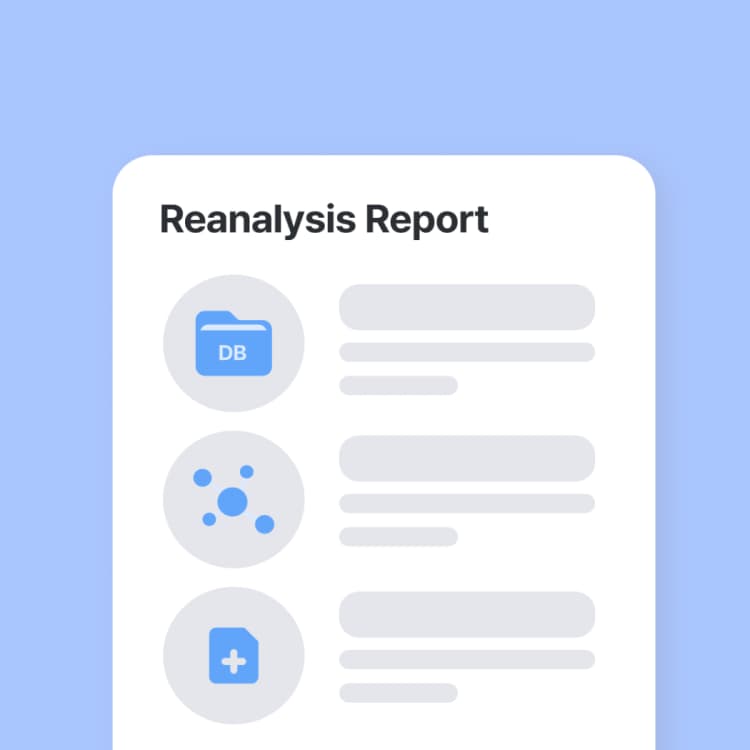Fabry disease: Interview with Dr. Ji-Hee Kim
- Interview | 23. 02. 22
3billion collaborates with pharmaceutical companies to help with personalized drug prescriptions. We will look into a few cases of patients who were diagnosed with Fabry disease in a diagnostic program for this disease operated through collaboration in 2022. The cases will be introduced through an interview with Professor Ji-Hee Kim who diagnosed Fabry disease.
*This article was written based on a remote interview on September 29th.
Fabry disease is a rare, inherited metabolic disorder of X-linked recessive inheritance. The symptoms vary, including pain in the legs and arms, sensory abnormalities, chest pain, reduced sweating, and angiokeratoma, but it is also common that there are no symptoms or non-specific symptoms. Thus, it is difficult to diagnose Fabry disease only with clinical symptoms at an early stage. Radical treatment is performed using enzyme replacement therapy (ERT) after diagnosis. It can slow the progression of the disease and prevent potential complications. For more details, here is the link.
We asked for an interview with you because we would like to hear from you about the cases in which you diagnosed Fabry disease using genome sequencing, and prescribed medications for it. We are also pleased that you did not only make a diagnosis, but also gave effective prescriptions to actual patients. Thank you so much for allowing us to have an interview with you.

How did you participate in the Fabry disease diagnosis program?
A program aiding the diagnosis of Fabry disease is run by our hospital. Previously, only single-gene testing that focuses solely on the α-galactosidase A (GLA) gene—a gene that causes Fabry disease—was supported. But recently, it was just upgraded to a test that can simultaneously evaluate many genes. Hence I could use it. It is difficult to suspect Fabry in the first instance when we see a patient because there are similar symptoms. It was a burden on patients or doctors as well to recommend and perform tests because blood collection was necessary for conventional tests. By using buccal samples, it is possible to collect a sample at the site of medical practice, so I thought it was very useful.
You are a specialist in echocardiography, thus it seems that you can frequently see symptoms related to Fabry disease. So, I wonder if there are any strong clinical symptoms with which Fabry disease can be confirmed.
Red flag symptoms, which are characteristic, strongly suspected Fabry disease symptoms, can be identified through the electrocardiogram (ECG), echocardiogram (ECHO), and magnetic resonance imaging results. If left ventricular hypertrophy (LVH) is mainly found with the short PR interval simultaneously, we suspect Fabry disease. When I interpret the ECHO, I always check medical records written by clinicians. Once LVH is found on ECHO, I check the medical records if there are any other comorbid symptoms such as hypertension. In such cases, it is recommended to perform Fabry screening.
– LVH: left ventricular hypertrophy
– HCM: hypertrophic cardiomyopathy
– ECHO: The color of lesions seen on the ECHO screen
– PR interval: ECG interval
Out of approximately 80 tests requested to 3billion, two people had positive results, and two had inconclusive results. Among them, are there any cases that have been prescribed medications for Fabry disease?
Two patients were diagnosed with Fabry disease. The first patient showed severe LVH on ECG, for whom there was a previous finding from another hospital that Fabry testing was needed. I also suspected Fabry disease, thus performed genetic testing. According to the test results, the patient was diagnosed with Fabry disease. The patient was prescribed ERT drugs and is currently receiving treatment well without any adverse events.
The second patient is the case in which all her family members have been diagnosed and prescribed drugs. Colporrhagia occurred in the patient, and she urgently visited a hospital. The department of obstetrics and gynecology suggested that she needed surgery. Accordingly, preoperative echocardiography was performed, and LVH was found incidentally. There was no shortening of the PR interval (ECG interval), but there was a hemorrhagic anemia symptom with shortness of breath, which made it difficult to strongly suspect Fabry disease. Genetic testing was conducted because of LVH on the ECG as a precaution. Based on the result, she was diagnosed with Fabry disease, and prescribed drugs. Additionally, the patient’s children had their suspected Fabry disease symptoms confirmed; therefore, they also received a genetic test. Her 25-year-old son had been given narcotic analgesic patches from the neurology department for the last 10 years, beginning from his third year of middle school, to manage his acute hand and foot pain and neuralgia. Compared to the mother, the son’s symptoms were more similar to those of Fabry disease. The genetic testing results also showed variants of Fabry disease, thus drug prescription was completed. The daughter showed symptoms similar to those of the son, but the symptoms were subtle in general. Moreover, a short PR was seen, but LVH was not found. Nonetheless, I requested genetic testing for her because of their family history, and the results showed variants in her, too. I am currently about to make a final decision on whether to prescribe medications for her or not after she visits the hospital.

There are so many companies making ERT, the treatment for Fabry disease. Does the effectiveness of the drug vary by product?
It is not statistically significant to verify the effectiveness of drugs of each brand because the number of patients is small yet. However, when I speak with doctors from other hospitals, it is deemed that all drug products are effective. I choose and prescribe appropriate drugs, depending on the patient conditions because the drug formulation and intervals are different. For example, when a patient does not want an injection, I prescribe oral medications. Or if they want fast-acting drugs because they should go to work, then I choose and prescribe such drugs.
You are a specialist in echocardiography at the department of cardiology. After patients with HCM are diagnosed with Fabry disease, do the care and treatment for them become a little easier?
It can be somewhat true. There is treatment for Fabry disease. Thus, fortunately, after a patient is diagnosed, tests for the family members can be performed rather smoothly. However, it is not the case for HCM. The heart failure association recommends to perform genetic testing proactively for genetic cardiomyopathy, but it is often the case that patients’ family members do not want to receive the tests to confirm the risk of HCM in advance.

What are the difficulties that you experience when patients consult you?
It is a shame that prescription medications covered by insurance are not available with genetic test results alone. Thus, ironically, in some cases, patients wait until their symptoms get worse enough to be eligible for the benefit of covered prescription medications. However, symptoms tend to occur in adults over 30 years of age, so the insurance coverage is applied in this case. And the findings from echocardiography specialists are the specified conditions for coverage. Thus, it is easier for the patients to be qualified for insurance coverage compared to other departments.
Is genetic testing performed by a designated doctor at the site of medical practice?
Yes, patients surely want to hear from the designated doctor. Because Fabry disease and amyloidosis are treatable, genetic testing and counseling can be carried out without difficulty. However, even with a diagnosis, clinicians do not have a treatment strategy for patients with HCM because there is no treatment available. Therefore, I feel that counseling is practically difficult.
How do you find the testing experience through 3billion?
3billion registered information on variants at ClinVar when novel variants were found, thanks to which I could diagnose patients faster, as well as completing drug prescriptions. One thing I would like to suggest to 3billion is to specify the date on which the test results can be expected, in addition to turnaround time (TAT) which is currently informed as about four to six weeks. Clinicians who confront patients, say that they have difficulty estimating the exact time when they can receive the test results after they requested genetic testing. It will be more helpful to schedule an outpatient appointment if the date is specified.

Curious How We Boost Diagnostic Accuracy?
Get the newsletter every month and discover the breakthroughs with the latest reanalysis report.
Do you find this post helpful?
Click the button below to copy and share the link.

Sookjin Lee
Expert in integrating cutting-edge genomic healthcare technologies with market needs. With 15+ years of experience, driving impactful changes in global healthcare.





